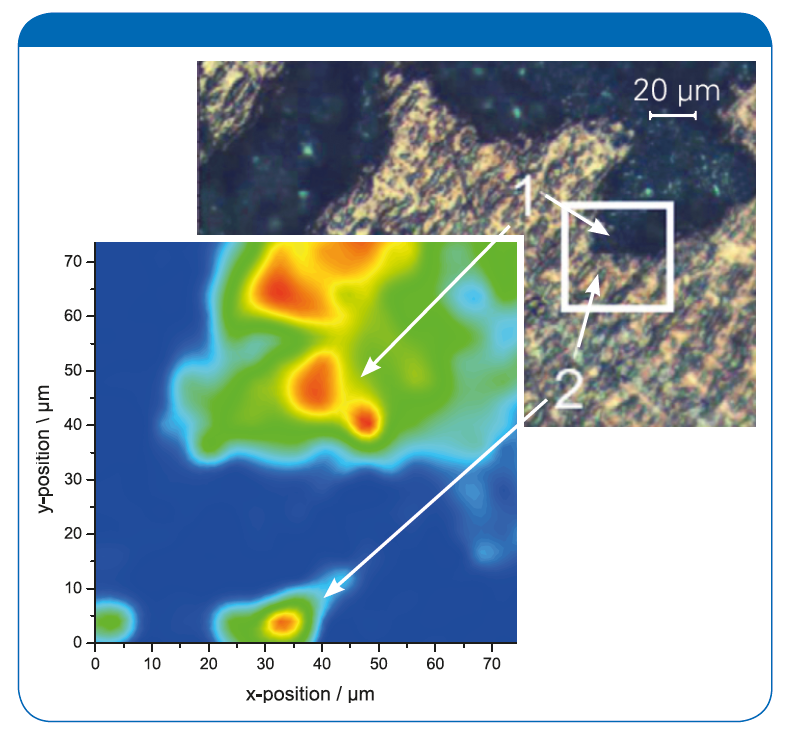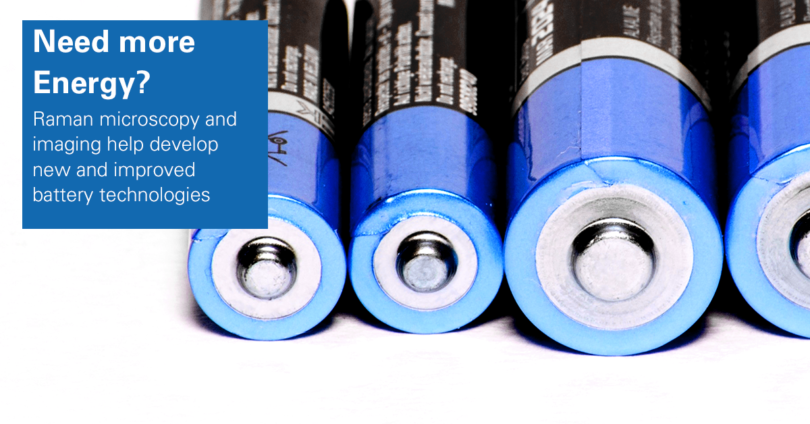Why is Raman microspectroscopy so commonly used?
Raman allows gathering a wealth of information about the chemical processes that take place in a battery and the materials involved. But what kind of information is gathered?
Well, that depends on your speficic setup and analytical question. In lithium ion batteries, this means that all of the materials and processes involved can be examined. But even in other battery types (e.g. solid state batteries), anode and cathode materials as well as electrolytes can be investigated.
In other words, Raman is the analytical technique for battery sciences.
You want an example?
Sure! German scientists Schmitz et al. used Raman imaging to visualize the Solid Electrolyte Interphase (SEI) of a lithium metal battery. Sounds complicated at first, but the data in Figure 1 speaks for itself.
The visual image shows high concentrations of a lithium salt in the upper right corner (dark areas). Remarkably, Raman microscopy revealed lowly concentrated amounts of lithium at the bottom left. Without Raman imaging, these would have remained undetected.
This yielded deeper insights in reaction kinects and side reactions during charge and discharge and helped to develop and improve new battery types and materials.

What do you get out of it?
This kind of fundamental research is the key in making your smartphone last longer and your car drive further. It may not happen today, but if you think about airplanes and larger scaled industrial applications it becomes clear. Next-level applications, need next-level energy storage.
And Raman microscopy keeps working on that!
Check out the AppNote or take a look at our website to learn more about confocal Raman microscopy. Raman spectroscopy not only of great use in battery research! Check out our other topics such as troubleshooting or the analysis of microplastics.
References
[1] R. Schmitz, R. A. Müller, R. W. Schmitz, C. Schreiner, M. Kunze,A. Lex-Balducci, S. Passerini, M. Winter, SEI investigations on copper electrodes after lithium plating with Raman spectroscopy and
mass spectrometry, J. Power Sources 2013, 233, 110-114. [2] Bruker AppNote R536 Battery Research by Raman Microscopy.








